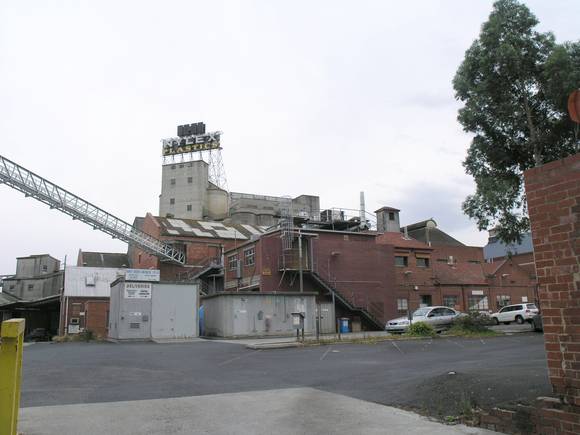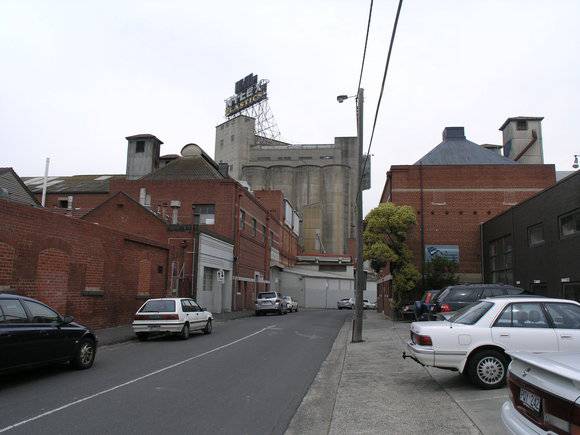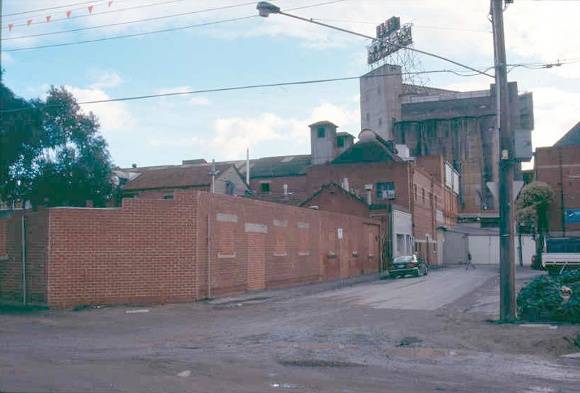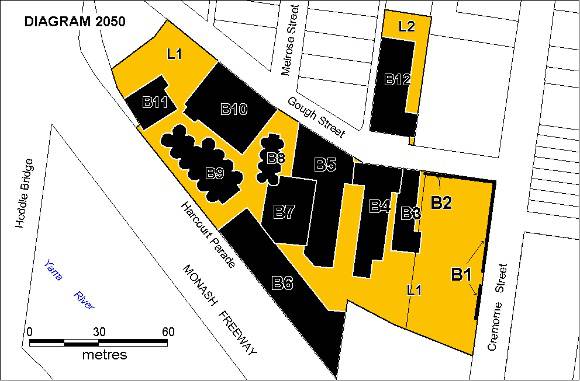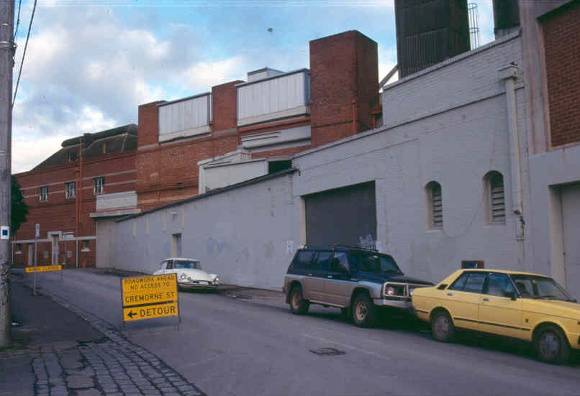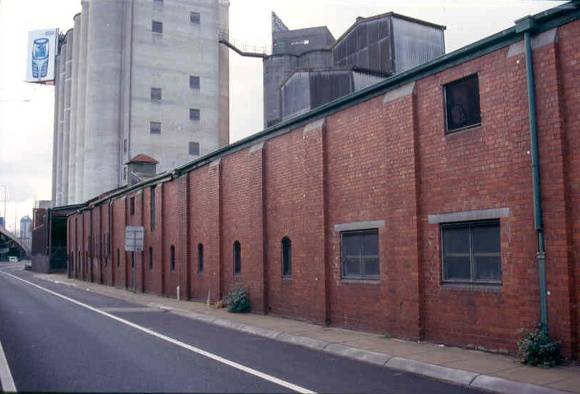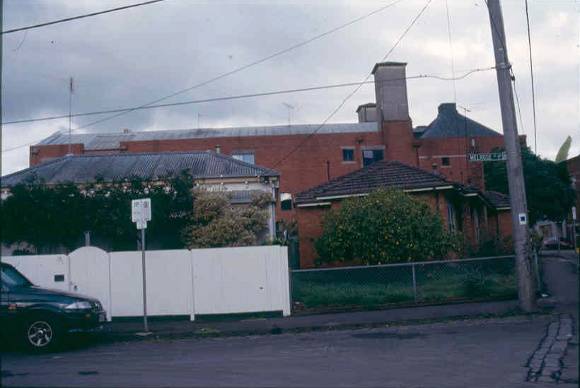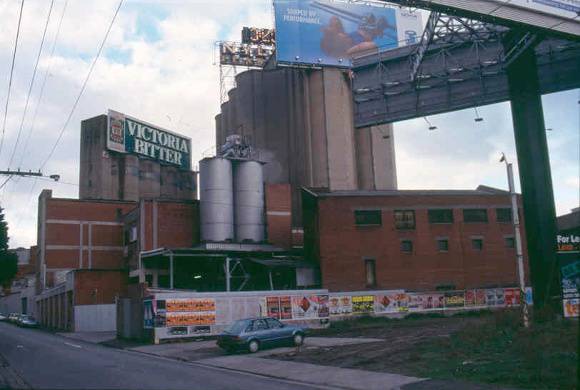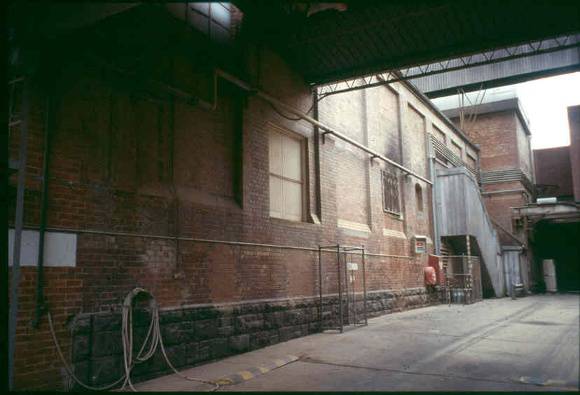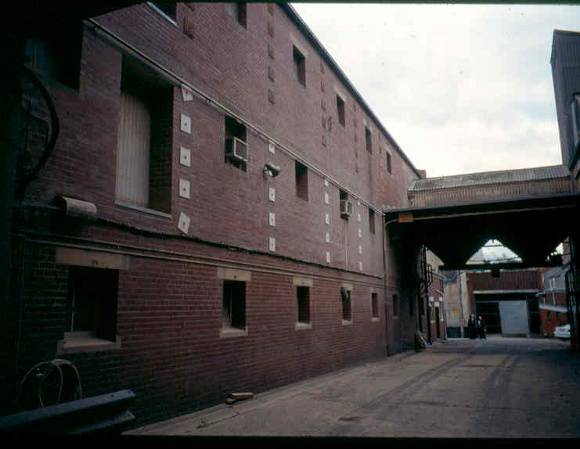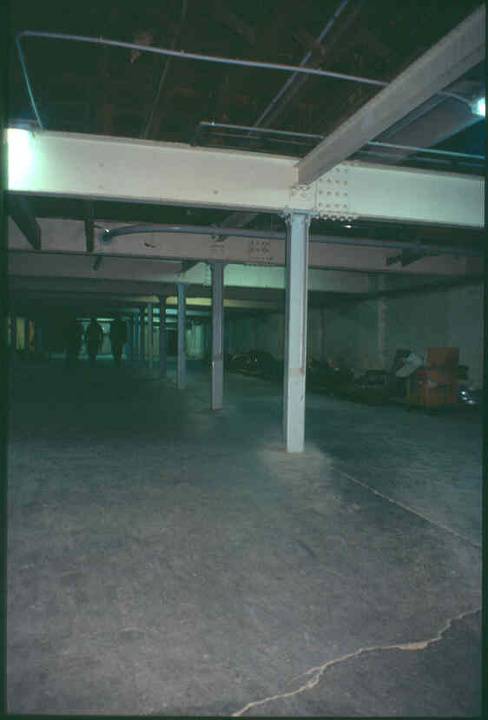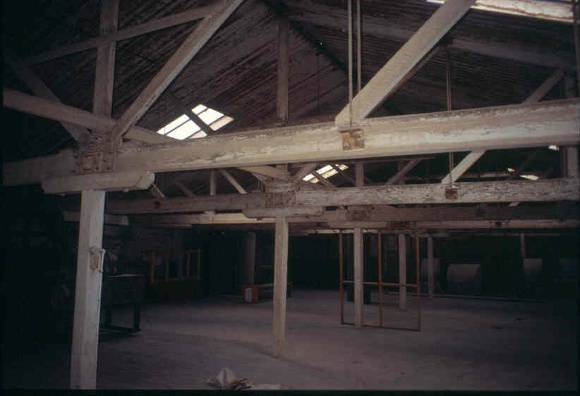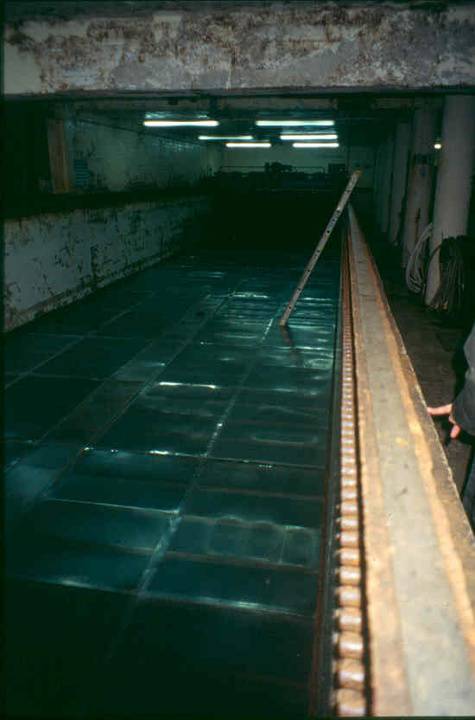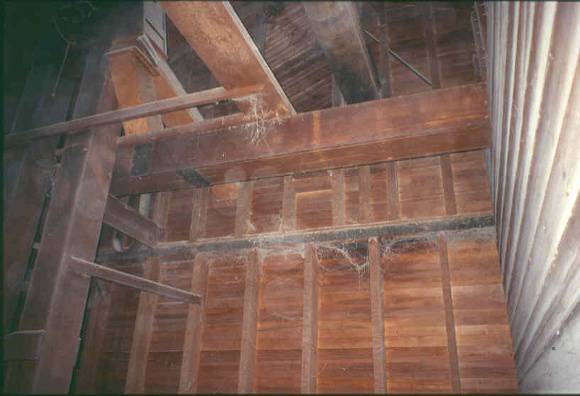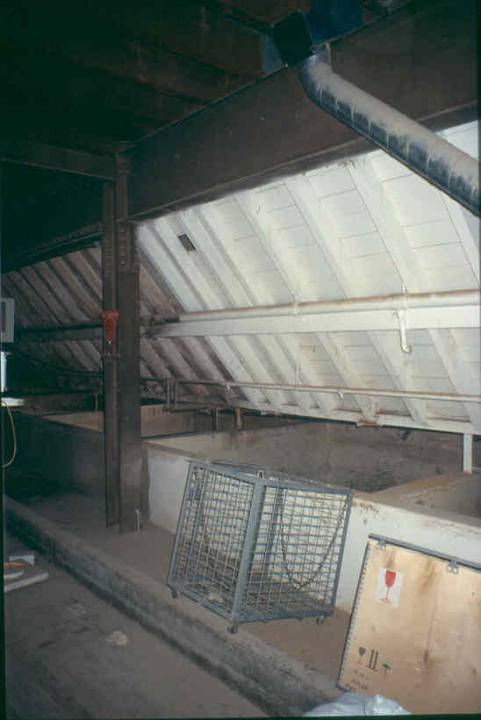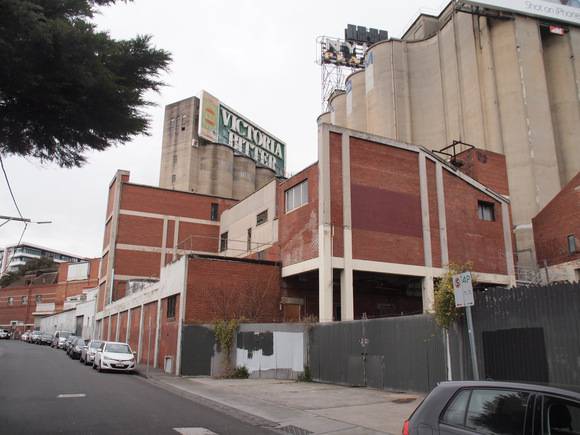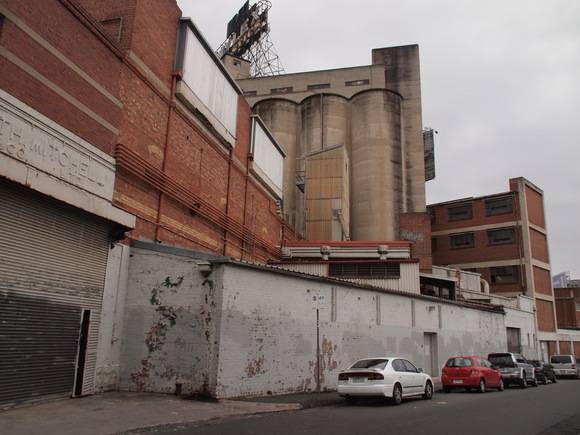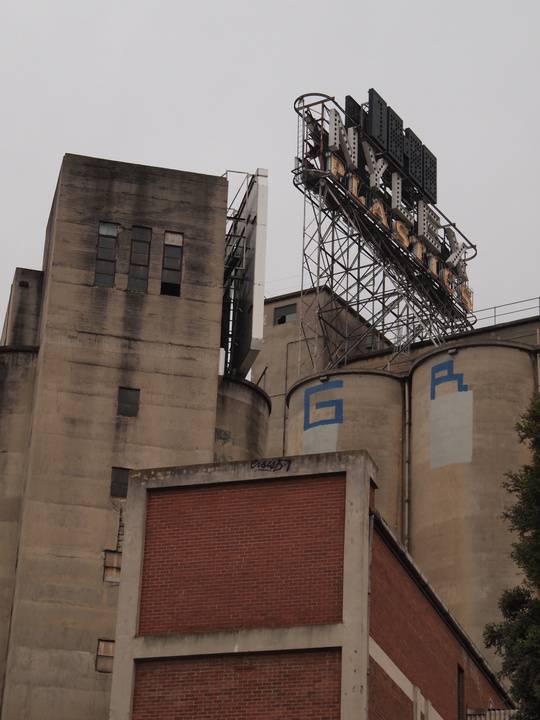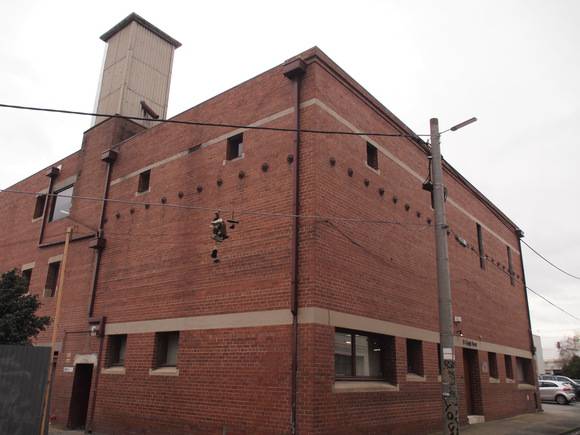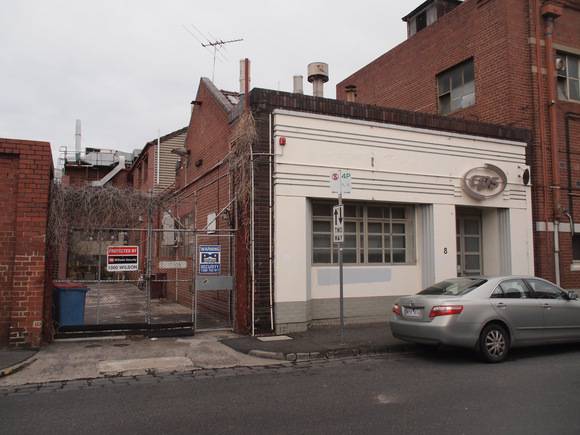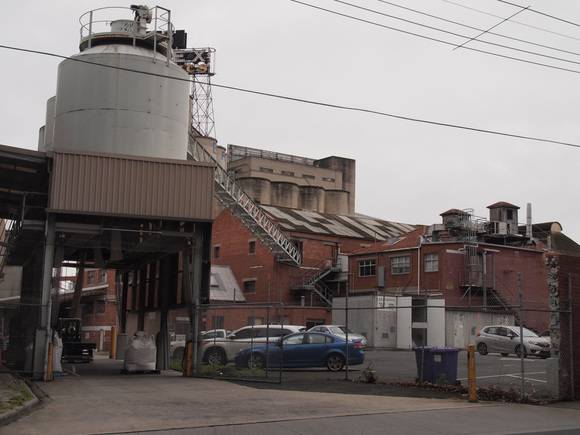| Back to search results » | Back to search page » |
|
RICHMOND MALTINGS
Statement of Significance
What is significant? The Barrett Burston Richmond Maltings site was initially developed as a brewing and malting site in the 1850s-60s. By 1879 brewing had entirely given way to malting which continues on the site today. Malt is an artificially germinated grain, usually barley, with germination arrested at a critical point by kilning. By this process the starch stored up in barley is converted into sugar, one of the principal constituents after fermentation of beer. The complex consists of malt houses, stores, silos (including the illuminated Nylex sky sign and clock) and offices. The earliest surviving malt house on the site is the Temperley, Edwards & Badger designed building of 1880 which formerly housed a process based on the French Galland pneumatic system, one of the earliest uses of this malting technology in Australia. This malt house was extended in 1912 and 1918, and following a fire in December 1950 a modern Saladin box system was installed replacing the Galland process. In 1903, a new malt house designed on the older, floor malting process, was constructed. Another two substantial floor malt houses were constructed in 1920 and 1928, and an office building in 1922. By the late 1930s the 1860s former brewery malt house was replaced with a new pneumatic malt house and in 1939 a new store constructed. In 1942 a second pneumatic malt house was constructed on the north side of Gough Street but this was converted to offices in the 1980s and is currently leased by Barrett Burston as its Australian headquarters. In 1952 a building was constructed to house six pneumatic malting drums imported from the United Kingdom, the first of this type of system to be installed in a maltings in Victoria. The landmark 11 concrete silo barley store was erected in 1952. In the 1950s and 1960s a continuing process of mechanisation of the site took place, and further malting and storage capacity added, with a new Saladin box malt house fronting Gough Street (1956) on the site of the 1860s malt house, and more large concrete barley silos fronting Harcourt Parade (1960-62). The important malting companies operating on the site have been Smith, Winn & Fielding, maltsters, which operated until 1901, when it became Smith, Winn & Co. In 1906, Smith McDonald & Co, took over the 1880 malt house, and Barrett Bros, a substantial sale (as opposed to brewing) maltster company, took over the balance of the site until 1926, and also operated a 1860s malt house adjoining until 1936. In 1912, the company Smith, Mitchell & Co was formed to take over the 1880 malt house. In 1926 it acquired the balance of the site. In 1941 Smith, Mitchell & Co Pty Ltd, became a public company and further expanded the site. In 1972 it was taken over by Barrett Bros & Burston Co Pty Ltd, one of the two largest malting companies in Australia. Barrett Burston currently operates the site. How is it significant? The site is historically, scientifically (technologically), aesthetically, socially and archaeologically significant to the State of Victoria. Why is it significant The Barrett Burston Richmond Maltings site is historically significant as the oldest surviving independent sale (as opposed to brewing) maltster site in Australia. It has been continuously associated with the brewing and malting industry since 1852. It is the earliest and most intact of the four remaining nineteenth century sale maltster sites still operating in Victoria, the others being the former James Hood & Co site, Islington Street, Collingwood (1878), the Barrett Burston Gibdon Street site, Burnley (1892), and Joe White Maltings, Gregory Street site, Ballarat (1898). The site is historically important for its strong associations with significant malting companies such as Smith, Mitchell & Co, which developed and operated the site between 1912 and 1972, and Barrett Burston, one of the largest malting companies in Australia. The site is of historical interest for its association with Charles Smith, who was involved in the site until his death in 1903. Smith, one of the earliest sale maltsters in Victoria, was Mayor of Richmond 1873-74 and Lord Mayor for Melbourne 1883-84, and was a member of the Legislative Assembly. The Barrett Burston Richmond Maltings site is scientifically (technologically) significant for its pivotal role in understanding the industrial production of malt both by the pneumatic and the floor processes. The 1880 malt house is the only nineteenth century pneumatic malt house surviving in Australia, and is of outstanding technological significance as one of the earliest pneumatic malt houses in the world. While the building was substantially re-modelled following fires in 1950 and again in 1965, the existing mechanised Saladin box process with two parallel germinating boxes and perforated floors is very similar to the original Galland box process described in the opening of the malt house in 1880. The 1920 malt house, with its low floor to ceiling height of 9 feet, a large open concrete floor, with open store room above, and timber louvred windows set opposite each other in the side walls to control air flow, is scientifically (technologically) important for its demonstration of many of the essential characteristics of a traditional floor maltings. While once relatively common in Victoria, with many having been demolished and others adapted to pneumatic malting systems from the 1930s onwards, or adapted to alternative uses, it now represents a very rare surviving example of its type. The 1952 pneumatic drum malting building, originally built with six drums imported from the United Kingdom, later replaced by drums constructed in Victoria by Vickers Ruwolt Pty Ltd, demonstrates the earliest use of this malting technology on a sale maltster site in Victoria. The 1939-40building for storing barley was supplemented in 1952 by 11 concreted silos, which represent an early surviving example of this form of barley storage system on a sale maltster site in Victoria with only the 1937 silos in Abinger Street Richmond (now converted to residential use) being older. The Barrett Burston Richmond Maltings site is aesthetically and socially significant as a substantial Melbourne landmark. This collection of four brick malt houses dating from 1880, 1920, late 1939s and 1942 together with the 1952 and 1960s concrete silos present a distinctive industrial aesthetic, which has formed a significant part of the townscape of Richmond, the adjoining River Yarra and South Yarra, for many years. Three of the malt houses retain distinctive external evidence of malt kilns, a feature found on only two other remaining malt houses in Victoria. The 1952 and 1960s concrete silos by reason of their height scale and bulk visually dominate the immediate townscape, and are also viewed over a wide distance in eastern Melbourne. Together with the Nylex sign, which sits atop the silos, they have become a significant cultural iconic feature in the Melbourne landscape and psyche and even feature in the song Leaps and Bounds by musician Paul Kelly. The Barrett Burston Richmond Maltings site is archaeologically significant not only for its visible remnants of the malt houses constructed in 1903 and 1928 but also for the potential archaeological remains of the brewing buildings of the 1852 Cremorne Brewery and 1860s malt house.
Group
Manufacturing and Processing
Category
Brewery


